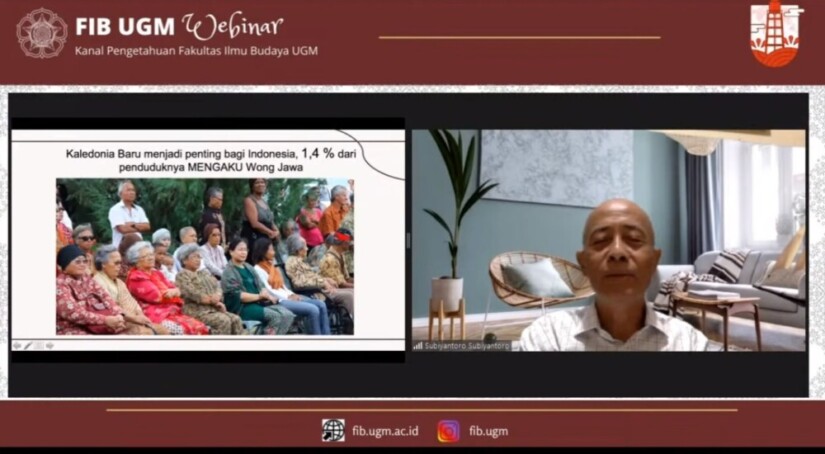
Lecturer and researcher of the Faculty of Cultural Sciences, Subiyantoro, looked into linguistic hybridity in the Javanese language spoken in New Caledonia. The hybrid phenomenon gives birth to the Javanese New Caledonian language, which consists of a mixture of French and Javanese vocabulary.
New Caledonia is a special collectivity of France in the east of Australia with a land area of 18,576 square kilometers. The largest and principal island of the territory is Grand Terre, with Nouméa as the capital city and French as the official language.
Historically, the people from Java (mostly Javanese) began their settlement in New Caledonia in 1896. As many as 170 people migrated to the area to work as contract laborers. The 2019 census shows the population is now around 4,000 (1.4%), comprising the eighth and ninth generation of full or partial Javanese descent.
“The Javanese New Caledonian language is transforming. Today, it is still used for communication, but in a limited scope. One feature that distinguishes the language from the standard Javanese is the Javanese-French hybridization,” he said in the Faculty’s webinar, Wednesday (18/8).
For example, he continued, Javanese New Caledonians used iki posong sing proteze instead of iki iwak sing dilindungi (standard Javanese) to say this is a protected fish, which indicates the presence of code-mixing in the language.
There is also a shift in meaning in the word slametan, which in Javanese refers to a traditional ceremony to ask for safety or celebrate certain events ranging from birth, marriage, moving to a new house, circumcision to death, etc. In Javanese New Caledonian, the use of slametan is restricted to death-related events only. To refer to joyous celebrations, people use a hybrid French-Javanese word lafetan (from French la fête and Javanese suffix -an).
Changes in pronunciation also appear. For example, lemper (snack made of glutinous rice) becomes lumper, etc.
Visit the following link to watch the webinar.
Author: Aji

